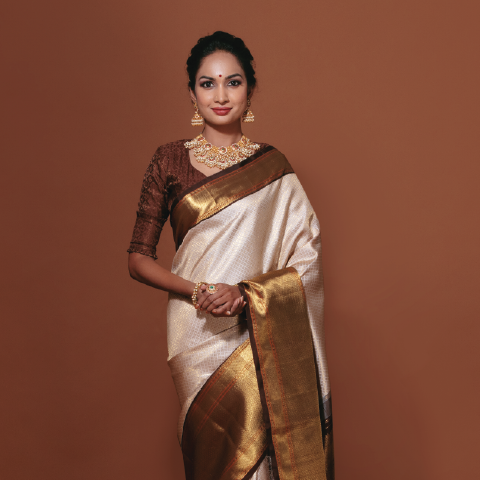India's foothold in the art and science of fabric weaving and printing is beyond our imagination. One such fabric printing technique which holds a glorified place in our history is the Tie and Dye, whose origins can be traced back to the times of Alexander the Great. In multiple texts, he mentions the vivid and vibrant dyes he encountered during his time in India.
Technically, this art form comes under the category of resist-dyeing and uses methods like binding, twisting, tying and stitching to prevent the colour from the dye to spread to particular places in the fabric, and in the process create beautiful patterns. The most ancient Tie and Dye technique from India is said to have originated in the villages of Rajasthan and Gujarat as a form of self-expression and a mode to cultivate creativity. Referred to as Bandhani, the Muslim Khatri community are believed to be the first artisans to employ this process to create a spectrum of patterns.
This highly complex and creative fabric printing style is renowned across the globe for its richness in terms of prints, palettes and patterns. Every inch of the fabric is filled with tales from the past, present and future, through lively colours and motifs that are specific to the culture of each region. What makes it even more special is that they are inspired by everyday things we find in the life around us, starting from nature, rural lifestyle and people to ancient architecture, paintings and sculptures, resulting in patterns that speak louder than a thousand words.

For thousands of years now, India has attached great meaning and symbolism to specific patterns in a pre-determined range of colours. In line with this, patterns in the tie and dye technique are in plenty and here are a few examples - the Barah Baag represents a garden of flowers, the Chokidal is a sequential arrangement of squares and animals, the Chandrokhani features spherical medallions on a dark backdrop and the Raas Mandali showcases the traditional Raas or Garba dance form.
In this week's blog, we will delve a little deeper and continue to browse through India's catalogue of fabric prints and patterns, and understand what makes each of these tie and dye techniques so special.
BANDHANI
Native to the Kutch and Saurashtra regions of Gujarat, the highly skilled art form of Bandhani involves tying the fabric at several points with a thread and then dyeing it in natural dyes. A metre of fabric is said to have up to thousands of tiny knots which produce stunning patterns like Chandrakala, Shikari, and Ambadaal.
Look out for: Vibrant backgrounds in yellow, red, blue, green and black with intricate patterns in white.

IKAT
A technique with strong Indonesian roots, Ikat is a resist-dyeing technique where the yarns are dyed before the weaving commences. How the yarns are bound together determines the patterns to be formed post weaving, and the process may be repeated to create intricate designs. An apparent trait of Ikat is the blurred edges and designs, which is highly sought after.
Look out for: A blend of indigo and white featuring either geometric or floral patterns with a blurry effect.

LEHERIYA
An indigenous Rajasthani tie and dye technique, the process involved in Leheryia begins with either rolling the fabric diagonally or making fan folds and then tying it in regular intervals, after which it is dyed. This helps in creating a wave or ripple-like patterns. Fine count cotton or silk is usually used as it allows the dye to permeate to the innermost parts of the rolled fabric.
Look out for: Distinctive striped patterns in the bright and bubbling shades of the sea.

SUNGUDI
With the onset of migrants from Gujarat settling in the town of Madurai, came the rise of a culturally blended tie and dye technique called Sungudi. It employed the Batik style of wax-resist dyeing, where the fabric is first bleached, tied into knots, dyed in signature shades and then washed. It leaves behind a circular dotted pattern that is said to be inspired by the constellations.
Look out for: Shades of maroon, purple, blue and black featuring contrasting gold borders and geometric kollam patterns.

These prized patterns that belong to India's treasure chest carry with it the rich legacy of our past, and the duty to keep its torch burning has been entrusted upon us, as a generation. Innovation, integrity and hard work are the key elements we need to bear in mind as we embark on this journey to spread awareness and appreciation for our traditional craft forms. Watch out for this space as we explore more such prints and patterns that need to be preserved.






